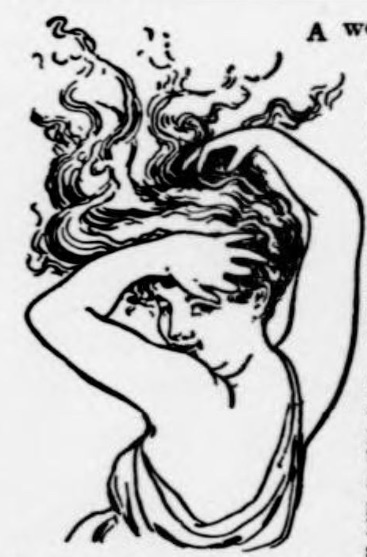
The following article was published in 1912 and talks about what dress and travel was like back in 1812.

Just One Hundred Years Ago
How Our Ancestors Dressed and Traveled
The short waist was just going out of fashion in 1812; skirts were almost as skimpy as today’s. The ultra fashionable wore them of very soft, sheer, clinging material. These gowns were the subject of many a satire, a historian tells us.
Fur muffs of a size even as they are now were liked so well that many women carried them in summer. Pictures of women in muslin dresses, straw hats and fur muffs are preserved to us.
The stylish man wore tightly fitting trousers and went in for considerable color, vying with the rainbow in that respect. Sideburns pointed toward an approaching bearded age.
When he traveled he rode on top of a coach. There were no railroads for dining cars to run over, hence the traveler alighted at taverns along the highway for his food.
Boats plied between New York and Philadelphia upon which passengers “ran down” to either city in 96 hours; railway trains now make it in two hours. Freight rates were high; bad roads and high tolls made the average rate of transportation the country over cost $10 per ton per 100 miles.
To haul a ton of freight from Philadelphia to Pittsburgh, an all land route, cost $125; to move a bushel of salt 300 miles on any road cost $2.40; $5.00 to move 100 pounds of sugar the same distance. It cost $1.00 to get a bushel of 50 cent wheat from Ohio to New York. Canvas covered wagons, drawn by oxen and horses, did the freighting.

The cost of freight, together with the war in Europe, which cut off most of the American commerce, sent prices to such a height that poor people lived on the verge of starvation. In Boston, flour cost $17 a barrel; salt, $3 a bushel, coffee, 65 cents a pound; sugar, 50 cents a pound; molasses, $2 a gallon; tea, $4 a pound. Everybody who had any spare change bought up all the foodstuffs he could and stored it, awaiting still higher prices. A paper of pins cost $1.
The average New England laborer got $7 a month and board during the winter, $10 in summer. Along the great lakes wages rose to the monumental figure of a dollar a day. Labor organizations were merely benevolent societies, and the thought of striking for higher wages had just taken root. The only occupation that paid big money was slave smuggling, which, despite all the laws, was carried on with little molestation.

The first steamboat went down the Ohio from Pittsburg. Prior to that they built boats in Pittsburg, floated them down to New Orleans, or to Nashville, and there abandoned them. That gave the boat building in Pittsburg a never ending stream of customers.
The Methodist Episcopal conference noted down a resolution prohibiting their preachers from selling whisky and beer. The first American missionaries were sent to foreign lands, going to Asia. The army canteen was introduced, “a gill of rum, whisky or brandy is made a part of the regular daily rations of each soldier.”
Travelers did not send picture postals to the folks back home, postal cards not having been invented. There was no registered mail, and no special delivery mail. To send a letter composed of a single piece of paper under 40 miles cost 8 cents; if it went over 500 miles the postage was 25 cents. But if the letter weighed an ounce, four times those rates were charged.
Source: The day book. (Chicago, Ill.), 01 Jan. 1912.

